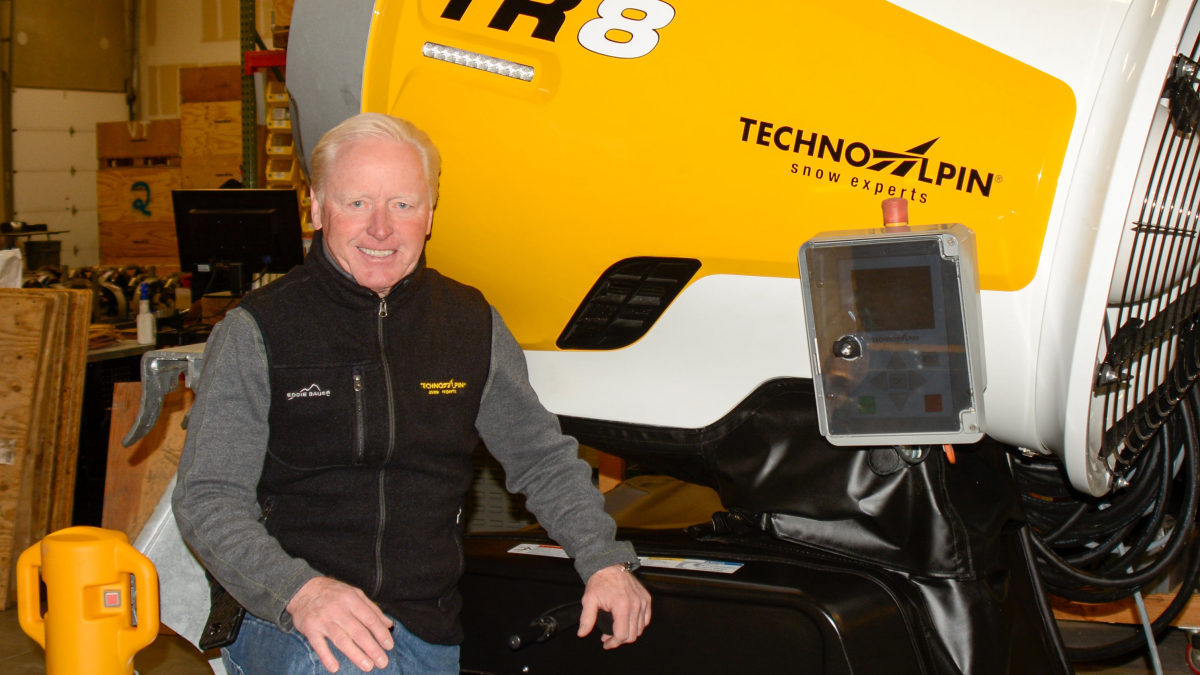
A Veteran Snowmaker On the Future of Skiing
Robin Smith is the go-to guy for snowmaking, which in light of climate change, is more relevant now than ever
Robin Smith, 70, got his start as a ski instructor at an upstate New York ski hill called Swain Ski Center in the 1970s. He went on to own and run that resort for over 20 years and installed the area’s original snowmaking system. When Intrawest bought Mountain Creek, an urban ski area in New Jersey, in the late 1990s, they called up Smith to run the place and help solve their snowmaking woes. Smith, now in business development for the Italian snowmaking company TechnoAlpin, has since become one of the ski industry’s most veteran snowmaking consultants and pioneers. He currently lives in Englewood, Colorado. “Robin knows how to look at your snowmaking system and quantify it,” says Dennis Harper, snowmaking manager at Idaho’s Sun Valley ski resort. “He’ll tell you how much snow you need to make and how much it’s going to cost to make your resort run.”

Resorts are more heavily dependent on snowmaking now than ever before.Why? First, the climate clearly is getting warmer. Secondly, skiers’ expectations are getting higher. In the old days, if you had a trail or two that people could ski before Christmas and it wasn’t glare ice, everyone was happy. But with the price of lift tickets today, for a $150 ticket, people have high expectations for what the snow is going to be like and how many runs are open.
When I started, the best snowmaking machines looked like machine guns that mixed compressed air with water. They were incredibly energy intensive. But energy back then didn’t cost much. There was no green logic that said this isn’t an efficient use of energy. And there was no alternative.
In the last 10 or 15 years, most resorts have been able to convert to energy-efficient snow guns. One of the guns I used to run in the early days might consume 95 KW of electrical energy. Today a modern gun uses 4.5 KW.
The biggest change in snowmaking is that more resorts are embracing automation. Ninety percent of European snowmaking is automated. In North America, we have some system automation, but true automation is just now gaining traction here. I think climate change is forcing us in the direction of automation.
Climate change means we have shorter windows of cold temperatures for snowmaking and less total hours of snowmaking opportunity than we’ve had in the past. We can no longer afford two and a half hours to start and stabilize a significant snowmaking system, then another two and half hours to turn it off when it becomes too warm to make snow. Automatic systems can be on and off in less than 10 minutes.
Our problem is finding people to fill these large manual snowmaking crews.We often see North American crews on large manual systems at 30 people or more per shift. Snowmaking is most productive when it’s coldest, which means at night. Since we can’t fill the crew, each crewmember has more guns to attend and more terrain to cover. Snow quality deteriorates and risk management issues rise.
I recently worked on a project for the EPA where they wanted to produce a paper that talked about the impact of climate change on winter sports. Their purpose was not scare tactics, doom and gloom; it was intended to mobilize an influential subset of people that would become motivated to do something personally or politically to contain climate change. We found that without very efficient automated snowmaking, a lot of areas in the country are not going to have enough snow to operate by 2025 and much less by 2095. Under the current administration, I’m not sure this report will ever see the light of day.
What will Sunday River, Maine, look like in 2025? Without snowmaking, the ski area likely won’t be able to open for more than 40 or 50 days of skiing by 2025. Most likely, if a ski area can’t operate more than 50 days, it can’t be viable.
Snowmaking doesn’t actually consume water: It takes water from a river or pond, turns it into snow, then melts it back into the ground, back to the river. But judicious use of water is becoming a big issue.
Machine-made snow is 10 times denser than natural snow. So it melts 10 times slower. Machine-made snow is much more durable.
Some of the best resorts in snowmaking are the ones that need it the most: Wintergreen, Virginia; Liberty Mountain, Pennsylvania; Holiday Valley, New York. If you’ve got a market and you can make it white, snowmaking can make a hill profitable.
In the past, we couldn’t control the water content in machine-made snow like we can now. Which meant that the snow back then was too wet, so when temperatures dropped, it turned to ice. Now we use more air and less water, so the particles are more discrete and they don’t block together as a chunk of ice. All of which is to say the machine-made snow we ski today is far less icy than it used to be.
Could we ever make powder snow from a machine? Not in my imagination. It would take some kind of technological breakthrough that almost defies physics. In nature, snowflakes fall a very long way through cold air and that sucks all the moisture out of them. That’s why the snow in say, Utah, feels so dry. Machine-made snow by definition has to have more water in it.
Posted from Powder via GrindTV



